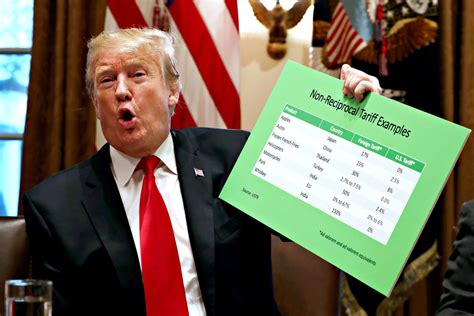President Donald Trump’s tariffs have been a hot topic in recent years, causing ripples across the global economy. The policies he implemented aimed to protect American industries and jobs by imposing taxes on imported goods from various countries. However, these tariffs have sparked debates and concerns among economists, policymakers, and business leaders worldwide.
The Origins of President Trump’s Tariffs
The roots of these tariffs can be traced back to Trump’s “America First” campaign promises. He believed that by imposing tariffs on foreign products, the United States could reduce its trade deficit and bring back jobs to American soil. As a result, he initiated a series of tariffs targeting countries like China, Canada, Mexico, and members of the European Union.
The Impact on Global Trade
The implementation of these tariffs had far-reaching consequences beyond the borders of the United States. Countries affected by the levies retaliated with their tariffs on American goods, leading to a tit-for-tat trade war that disrupted established supply chains and increased prices for consumers around the world.
Experts warned that such protectionist measures could ultimately harm international trade relations and slow down economic growth globally. The uncertainty surrounding trade policies under the Trump administration created volatility in stock markets and added pressure to already fragile economies.
Expert Insights on Tariffs
Economists have differing views on the effectiveness of President Trump’s tariff strategies. Some argue that protecting domestic industries through tariffs is necessary for national security and economic stability. They believe that these measures force other countries to negotiate fairer trade agreements beneficial to all parties involved.
On the other hand, critics point out that tariffs can lead to unintended consequences such as job losses in industries reliant on imported materials or components. Moreover, escalating trade tensions can strain diplomatic relations between nations and hinder cooperation on broader global issues.
The Future of Trade Policies
As President Trump’s term came to an end, there was speculation about how his successor would approach trade relations with other countries. The incoming administration faced the challenge of balancing protectionist measures with promoting free trade principles while mending fractured alliances damaged during the tariff disputes.
In conclusion, President Donald Trump’s vast array of tariffs left a lasting impact on global trade dynamics. Whether viewed as protective measures for domestic interests or disruptive forces in international commerce, they underscored the complexities inherent in balancing economic priorities with geopolitical considerations in an increasingly interconnected world.




Leave feedback about this